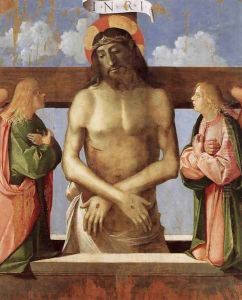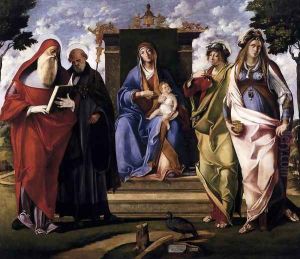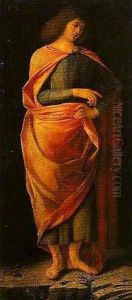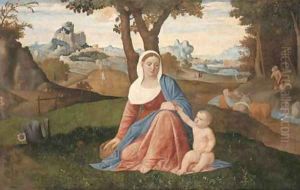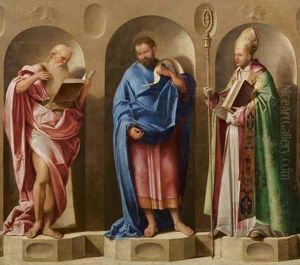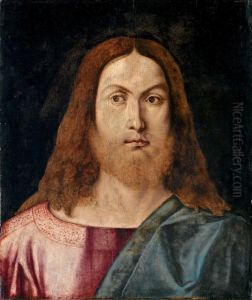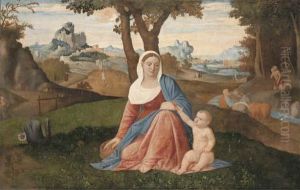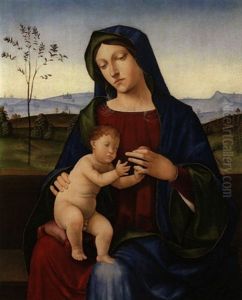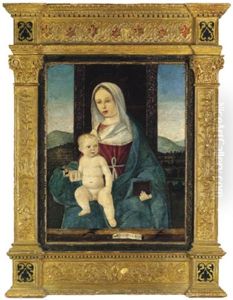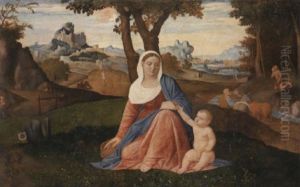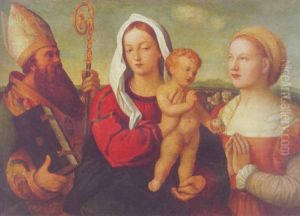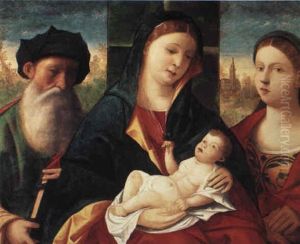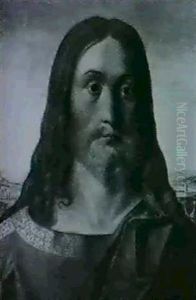Benedetto Diana Paintings
Benedetto Diana was an Italian painter of the Renaissance period, active mainly in his hometown of Venice. He was born around 1460, and his death is estimated to have been around 1525. Diana is often considered a follower of the Venetian painters Giovanni Bellini and Cima da Conegliano, and he was a contemporary of other well-known Venetian artists such as Vittore Carpaccio and Giorgione.
Diana's style is characterized by his use of rich colors and a clear, luminous palette typical of the Venetian school. He is known for his religious compositions, including altarpieces and smaller devotional paintings. His works often exhibit serene and contemplative figures situated within harmonious landscapes or architectural settings.
Little is known about Diana's life and training. It is believed that he was initially influenced by the works of Antonio Vivarini and Bartolomeo Montagna. Throughout his career, Benedetto Diana remained somewhat conservative, adhering to the traditions established by the earlier Venetian masters rather than fully embracing the innovations brought forth by the High Renaissance artists like Titian. Nonetheless, his paintings reflect a careful study of light and color, which was a hallmark of the Venetian school.
Diana's works can be found in various churches and museums, and he was reasonably successful during his lifetime. However, he did not gain the same level of fame as some of his contemporaries. As a result, his contributions have often been overshadowed in the history of Venetian art. Despite this, his paintings are appreciated for their clarity, devotional sensibility, and the gentle beauty that they embody. Some of his notable works include 'The Virgin and Child with Saints' and 'The Coronation of the Virgin'. His art has been studied for its reflection of the cultural and artistic environment of Venice at the turn of the 16th century.

